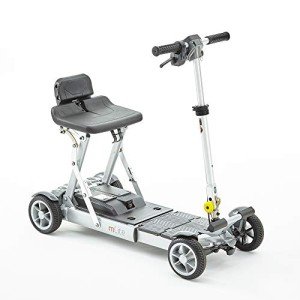A Help Guide To Mobility Devices From Beginning To End
Understanding Mobility Devices: Enhancing Independence and Quality of Life
In today's busy world, the desire for mobility is universal. However, particular medical conditions or age-related challenges can prevent motion, causing a continuous search for assistance. Mobility devices act as essential tools to improve independence, improve lifestyle, and allow people to engage totally in their communities. This short article offers an extensive overview of mobility devices, including their types, functions, selection criteria, and more.
Kinds Of Mobility Devices
Mobility devices vary from simple aids to complex equipment, customized to meet numerous needs. Below is a table summing up typical types of mobility devices:
Type of Device
Description
Ideal For
Walkers
Four-legged support devices that supply exceptional stability while strolling.
Individuals requiring extra support.
Walking canes
Single or three-legged sticks that improve balance and support walking.
Those with minor mobility problems.
Wheelchairs
Seats mounted on wheels, readily available in manual and electric variations.
People with minimal or no mobility.
Scooters
Electric automobiles developed for outdoor usage and ease of navigation.
Those who can't walk fars away.
Crutches
Devices that assist people transfer weight away from a hurt leg.
Individuals recovering from leg injuries.
Rollators
Walkers with wheels, seats, and brakes for boosted mobility.
Users requiring rest alternatives while strolling.
Lift Chairs
Reclining chairs that assist users in standing and sitting down.
Seniors or those with mobility restraints.
Mobility Scooters
Small electric cars for limited mobility, typically used outdoors.
Individuals requiring assistance over long ranges.
Key Features of Mobility Devices
When selecting a mobility gadget, a number of key features should be thought about to ensure optimal performance and ease of use:
- Weight Capacity: Understanding the gadget's weight constraint is important for security and effectiveness.
- Adjustability: Devices needs to be adjustable in height and width to fit the user easily.
- Portability: Lightweight and foldable options are essential for users who travel or require transport.
- Stability and Safety: Look for functions like anti-tip wheels and sturdy structures to boost safety.
- Alleviate of Use: Simple systems and user-friendly styles can make a significant difference in day-to-day use.
- Comfort: Ergonomic designs and cushioned seats can improve the user experience.
Choosing the Right Mobility Device
Picking the best mobility device can be a complicated task. Here are some steps to guide the decision-making procedure:
- Assess Needs: Evaluate the person's mobility obstacles and daily activities.
- Seek advice from a Professional: Engage healthcare professionals who can provide suggestions based upon the individual's physical condition.
- Trial Options: If possible, trial various devices to identify comfort and performance.
- Evaluation Budget: Consider the cost of the gadget, including any additional functions or adjustments needed.
- Research study Options: Determine the very best brands and designs by checking out reviews and comparisons.
Table: Comparative Analysis of Popular Mobility Devices
Device
Benefits
Disadvantages
Walkers
Exceptional stability, promotes walking.
Bulky, might limit motion in small spaces.
Walking canes
Lightweight, improves balance.
May not supply enough support for extreme mobility problems.
Wheelchairs
Perfect for those with substantial mobility restrictions.
Can be cumbersome, specifically in indoor environments.
Scooters
Great for outside usage, easy to maneuver.
Limited indoor functionality, heavier.
Rollators
Offers rest option, easy to move.
May need more space than conventional walkers.
Raise Chairs
Comfy, helps transition from sitting to standing.
More costly, bigger footprint.
Frequently Asked Questions (FAQs)
1. What is a mobility gadget?
A mobility gadget is any tool developed to help individuals in moving and navigating their environment. This consists of walkers, wheelchairs, scooters, and crutches.
2. How do folding mobility scooters for sale understand which mobility gadget is best for me?
Consider your particular mobility difficulties, physical capabilities, and lifestyle requirements. Consulting with health care professionals can also supply customized suggestions.
3. Are mobility devices covered by insurance coverage?
Lots of insurance coverage plans, consisting of Medicare, might cover certain mobility devices. It's important to consult your insurance coverage company for particular coverage information.
4. Can I rent a mobility gadget instead of buying one?
Yes, numerous medical supply shops and pharmacies provide rentals for mobility devices. This option is helpful for people with temporary mobility concerns.
5. How can I preserve my mobility device?
Routine maintenance is important. It consists of cleaning the gadget, looking for wear and tear, and making sure all parts are working properly.
The Impact of Mobility Devices on Quality of Life
Mobility devices substantially improve the lifestyle for people with limited mobility. They foster self-reliance, encourage social interaction, and boost access to vital services and recreational activities.
- Increased Independence: Users can navigate their neighborhoods, attend occasions, and engage in pastimes without counting on others.
- Social Engagement: Mobility devices facilitate participation in celebrations, thereby combating feelings of seclusion.
- Improved Safety: Devices offer stability and minimize the threat of falls, promoting user confidence.
Mobility devices are more than just tools for motion; they are entrances to self-reliance and quality living. By comprehending the various kinds of mobility aids available, their key functions, and factors to consider for choosing the ideal device, individuals can make educated decisions about their mobility needs. Ultimately, the best mobility device can lead to a more active, satisfying life. Whether it's a walker, wheelchair, or scooter, the right option contributes substantially to improving the mobility and independence of users.
